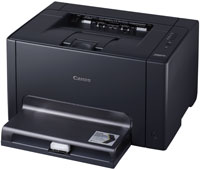
CANON LASER PRINTER DRIVER FOR MAC OS X DRIVERS
As you can see, some drivers are internal to CUPS and do not even have a PPD file in /Library/Printers, so lpinfo -m is the only way to be certain of everything available to the printing system. Library/Printers/PPDs/Contents/Resources/ Canon iPF8300S(CUPS)ĭrv:///sample.drv/okidata9.ppd Oki 9-Pin Seriesĭrv:///sample.drv/okidat24.ppd Oki 24-Pin SeriesĮach line specifies the path to that driver's PPD file, followed by the display name of the printer as declared in the PPD.

Library/Printers/PPDs/Contents/Resources/ Canon iPF8300(CUPS) Library/Printers/PPDs/Contents/Resources/ Canon iPF6350(CUPS) Library/Printers/PPDs/Contents/Resources/ Canon iPF6300S(CUPS)

Library/Printers/PPDs/Contents/Resources/ Canon iPF6300(CUPS) Library/Printers/PPDs/Contents/Resources/ Canon D460-490 Library/Printers/PPDs/Contents/Resources/ Canon D400-450 A sample of the output: MacBook-Pro:~ user$ lpinfo -m lpinfo -m will parse any valid PPDs found if it doesn't have a PPD that CUPS can parse, then it isn't a valid print driver. CUPS specifies that drivers can consist of an arbitrary number of files, but they must all be declared in a central PPD file.

The only authoritative list of available print drivers on OS X is that returned by lpinfo -m (specifying the host is not necessary for the local machine). While drivers are typically found in /Library/Printers, the folder can contain support files and many other things which are not themselves print drivers, and in the real world there is no canonical location within the folder where the actual driver files are stored. Since Mac OS 10.2, printing is handled by the CUPS system.


 0 kommentar(er)
0 kommentar(er)
